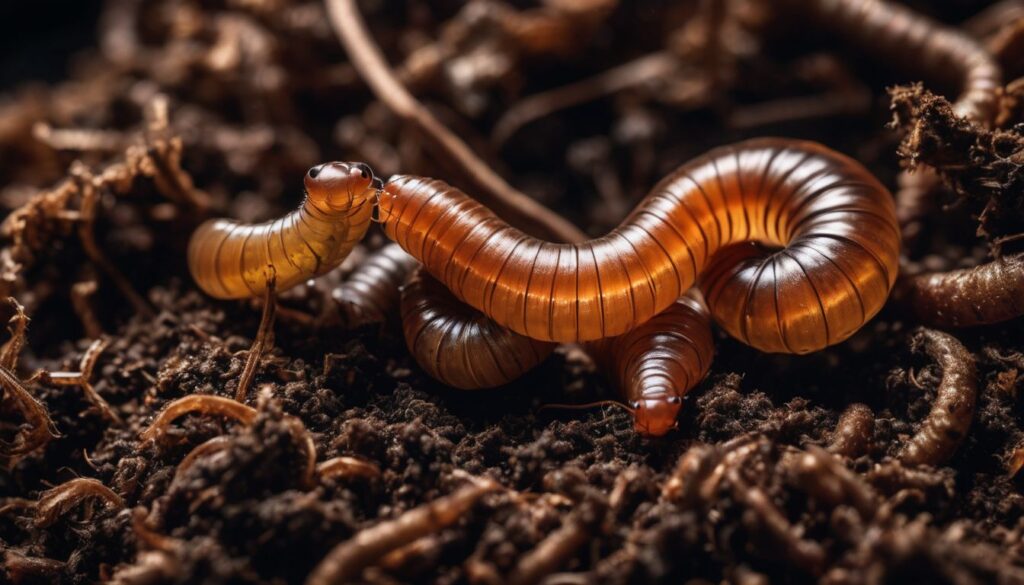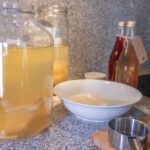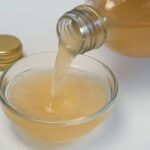Got a compost bin and wondering about the worms’ reproduction process? It might surprise you to know that composting worms, like red wigglers, are hermaphrodites with both male and female reproductive organs.
This blog will offer an easy-to-understand guide on how these fascinating creatures mate, lay eggs, and produce offspring right in your compost pile. Let’s explore on how do composting worms reproduce!
How Do Composting Worms Reproduce?
Composting worms, like red wigglers, are hermaphrodites with both male and female reproductive organs. They mate by exchanging sperm, and the fertilized eggs can be laid or held inside the worm’s body. After 2-3 weeks, the eggs hatch into tiny larvae that feed on organic matter and microorganisms before growing into adult worms. Environmental factors such as temperature, moisture levels, and pH significantly affect worm reproduction. Maintaining optimal conditions promotes a thriving worm population, leading to faster composting and a continuous supply of nutrient-rich worm castings beneficial for plant growth.
Key Takeaways
- Composting worms, like red wigglers, are hermaphrodites with both male and female reproductive organs.
- They mate by sticking their bodies together and exchange sperm to fertilize the eggs. The fertilized eggs are either laid or held inside the worm’s body.
- It takes about 2 – 3 weeks for the eggs to hatch into tiny larvae. These larvae feed on microorganisms and organic matter before growing into adult worms capable of mating themselves.
- Environmental factors such as temperature, moisture levels, and pH balance can significantly impact worm reproduction. Maintaining optimal conditions is crucial for successful reproduction.
The Life Cycle of Composting Worms
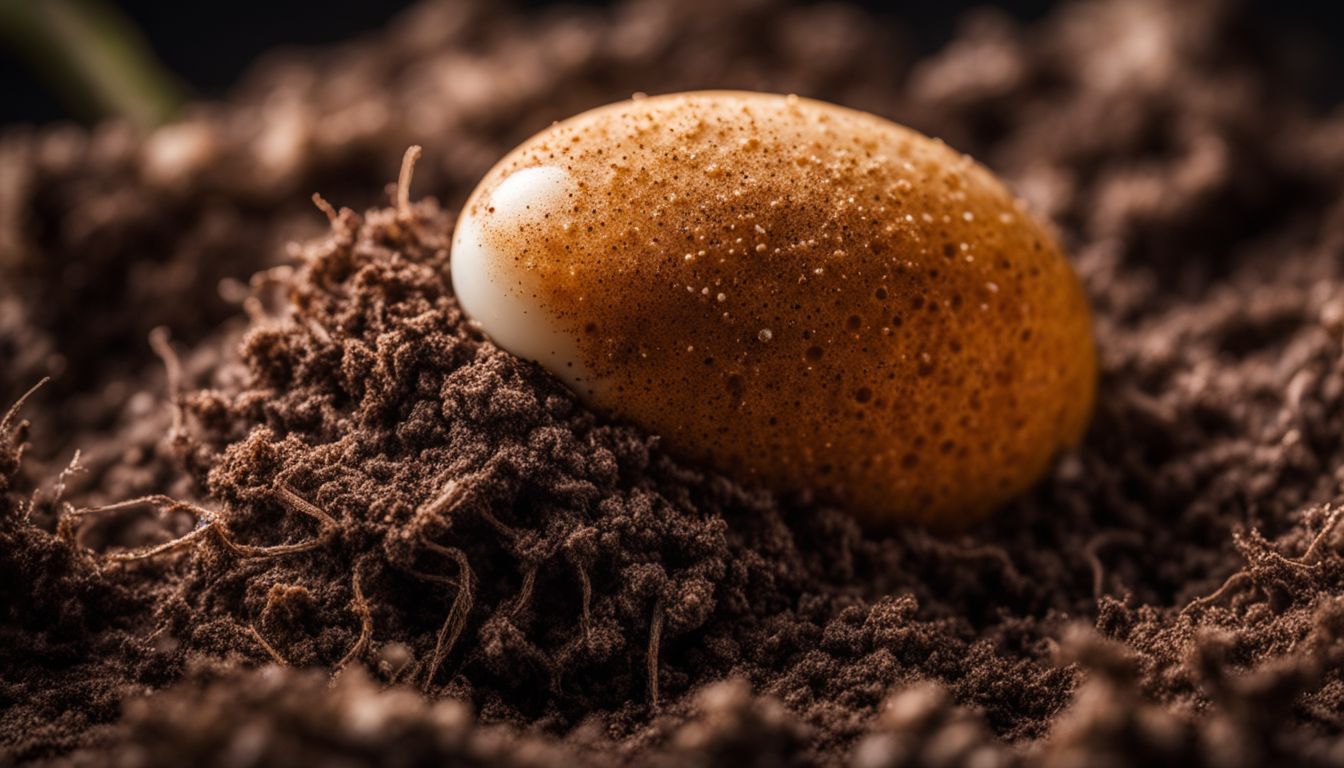
Composting worms undergo a unique life cycle that involves mating, egg production, hatching of larvae, and ultimately the growth of new worms.
Mating and reproduction process
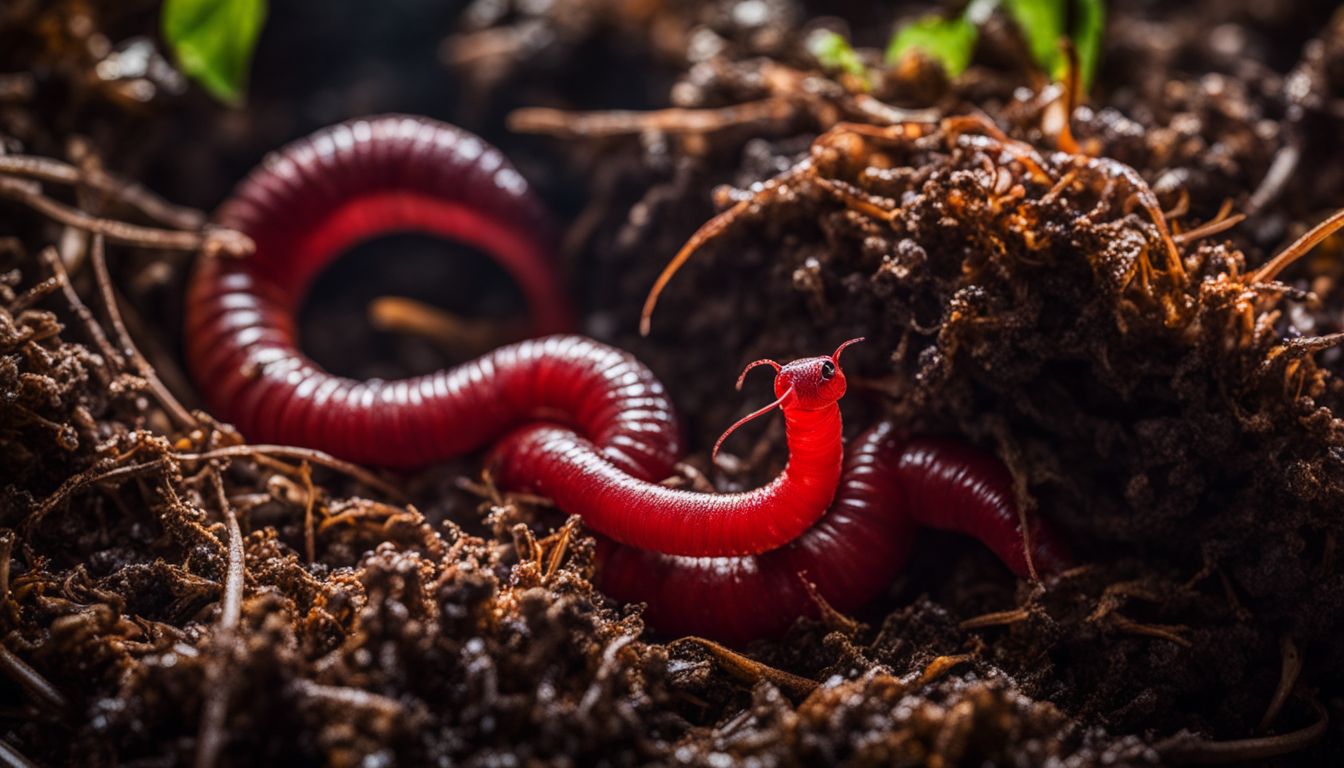
Composting worms like the red worm mate for life. Both worms have male and female parts. But they need another worm to make babies. The two worms stick their bodies together. They give each other sperm.
After that, eggs get made inside the worm’s body or laid outside it. In about a week to ten days, a type of composting worm called Tiger Worm can lay an egg.
Egg production and incubation
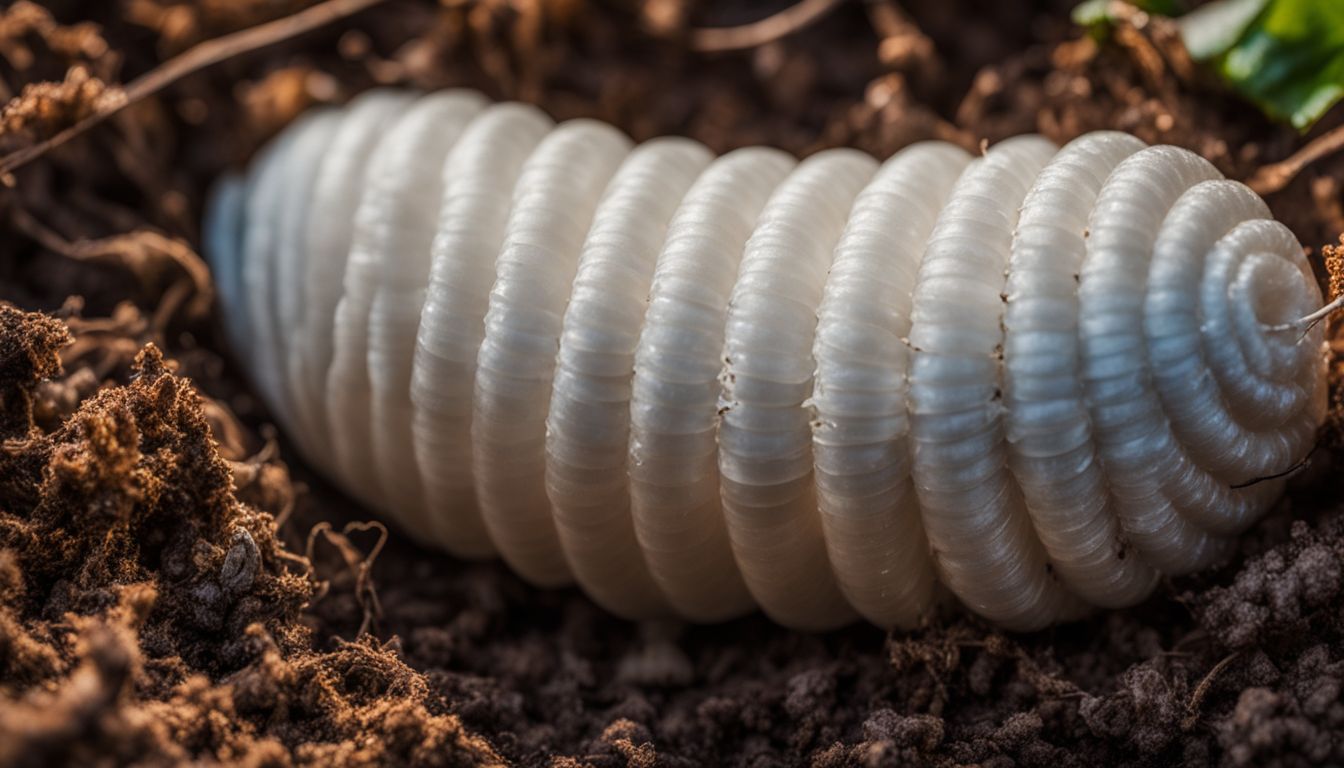
Composting worms, like red worms, reproduce sexually by mating with a partner. After exchanging sperm during mating, the fertilized eggs are either laid or held inside the worm’s body.
The specific species called Tiger Worm can lay an egg every 7-10 days, while other earthworm species typically only mate once or twice a year. Earthworms reproduce by laying cocoons that contain multiple eggs.
These cocoons provide a protective environment for the development of worm larvae. During incubation, the eggs hatch and the young worms grow until they reach maturity.
Hatching and growth of worm larvae
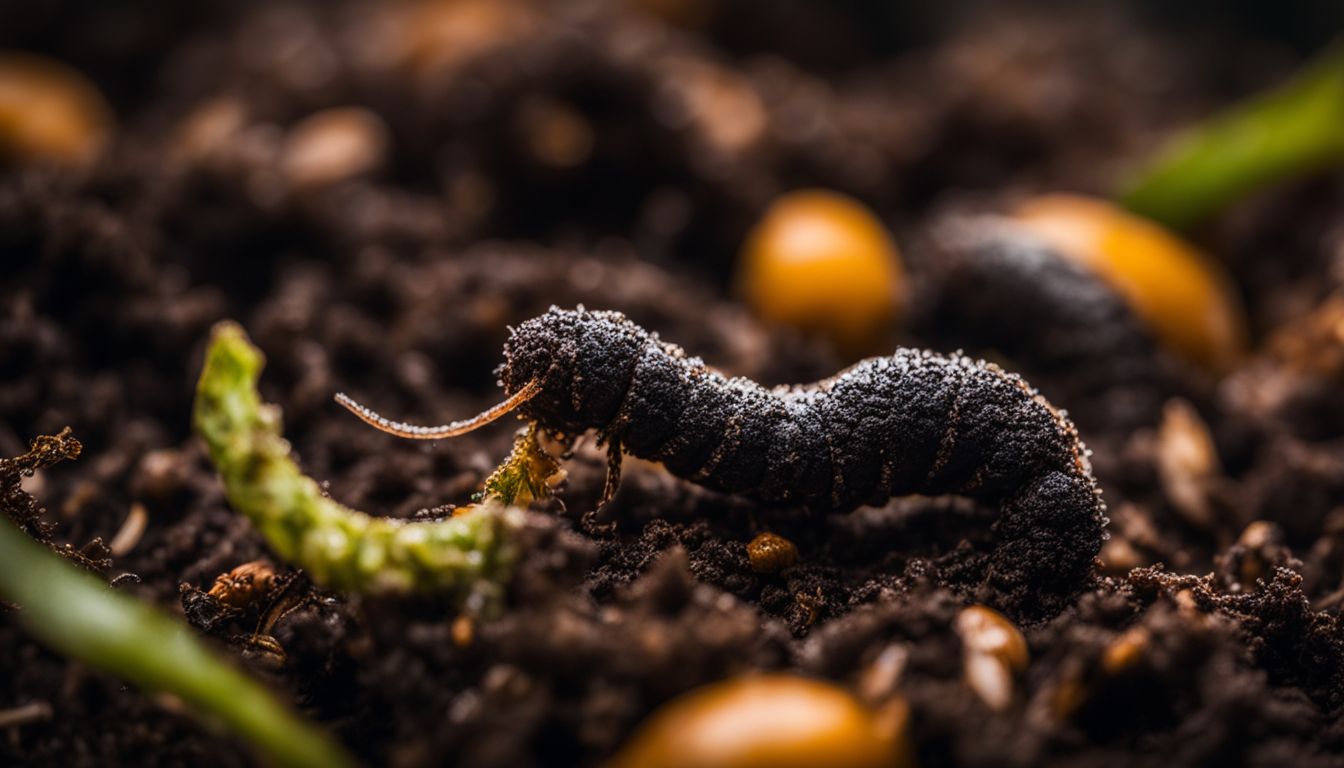
Once the red worms have laid their eggs, it takes about 2-3 weeks for them to hatch. The baby worms, known as larvae, are very tiny and barely visible to the naked eye. They start feeding on microorganisms and organic matter in the bedding material.
As they grow, they shed their skin multiple times before reaching maturity. It usually takes about 2-3 months for the larvae to mature into adult worms capable of mating and reproducing themselves.
During this time, it’s important to provide them with a suitable environment that includes enough moisture and a steady supply of quality food rich in protein content.
Environmental Factors Affecting Worm Reproduction

Temperature, moisture levels, and pH balance are crucial environmental factors that can significantly impact the reproductive success of composting worms.
Temperature

Temperature plays a crucial role in the reproduction of composting worms. These worms thrive in moderate temperatures, typically between 55 and 77 degrees Fahrenheit. If the temperature drops below their preferred range, their reproductive activity slows down or even stops.
On the other hand, if it gets too hot, above 85 degrees Fahrenheit, it can be detrimental to their reproductive cycle. Therefore, maintaining an optimal temperature is essential for promoting worm reproduction in a composting system.
Moisture levels
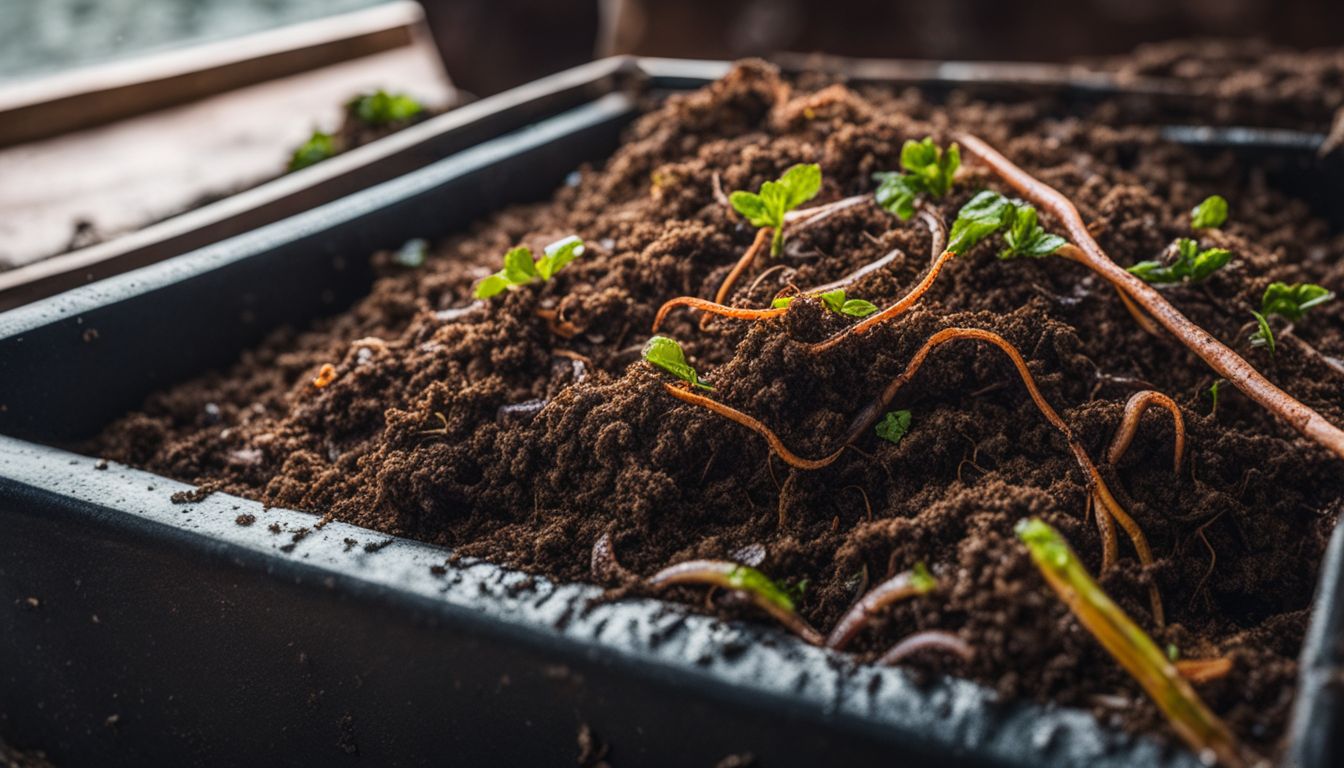
Moisture levels play a crucial role in the reproduction of composting worms. These worms need an environment with adequate moisture to stay healthy and reproduce successfully. If the bedding material becomes too dry, it can hinder their reproductive abilities.
On the other hand, excessive moisture can lead to oxygen deprivation, which is also detrimental to their reproduction. Maintaining optimal moisture levels ensures that the worms have enough water for essential bodily functions and helps create favorable conditions for mating and egg production.
By keeping the bedding moist but not waterlogged, we can promote a thriving worm population in our composting systems.
pH balance

The pH balance of the composting system is an important factor that can affect worm reproduction. Composting worms prefer a slightly acidic environment with a pH range between 5.5 and 7.0.
If the pH level becomes too low or too high, it can negatively impact their ability to reproduce. Maintaining the proper pH balance ensures the optimal conditions for worm mating, egg production, and hatching of larvae.
It is important to regularly monitor and adjust the pH levels in the composting system to support healthy worm reproduction and population growth.
Benefits of Composting Worm Reproduction
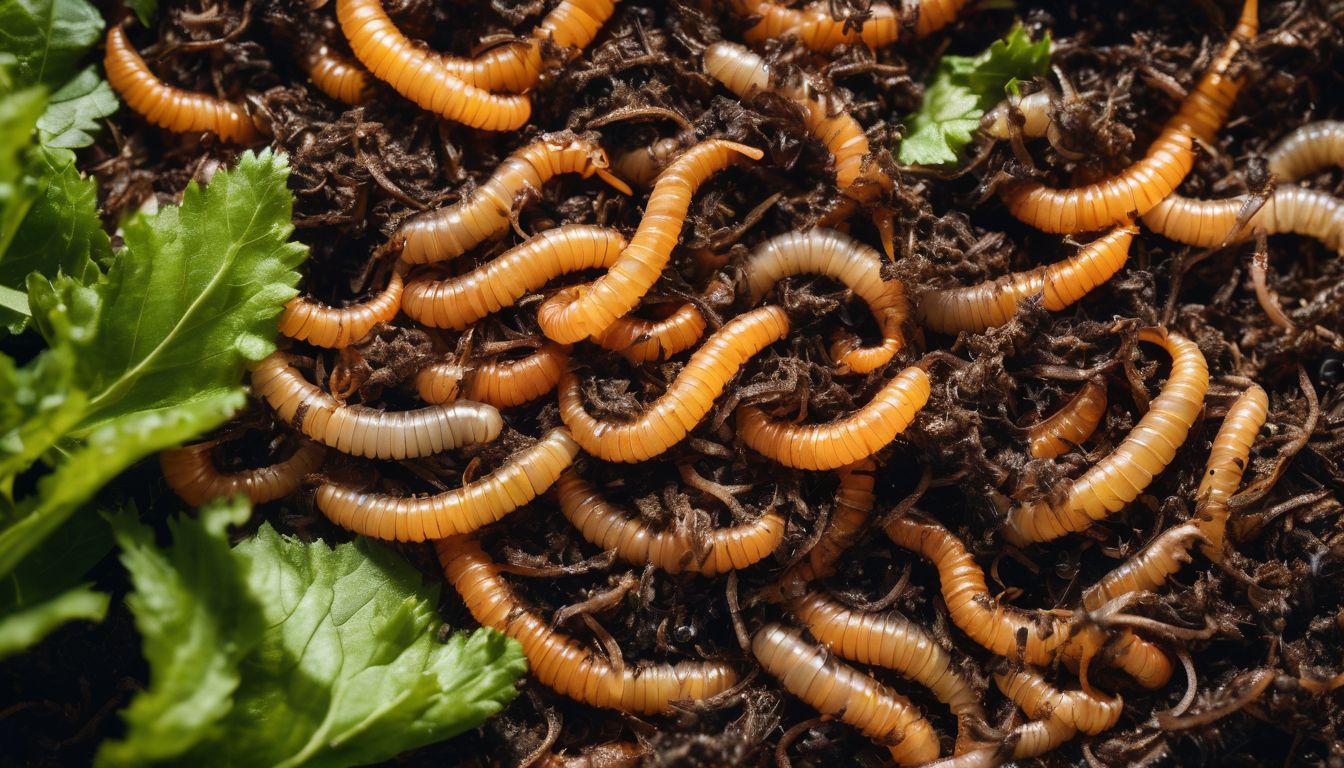
Composting worm reproduction provides numerous benefits, including an increased population for faster composting and a continuous supply of nutrient-rich worm castings. Learn more about how to promote worm reproduction in your composting system to reap these advantages.
Increased population for faster composting
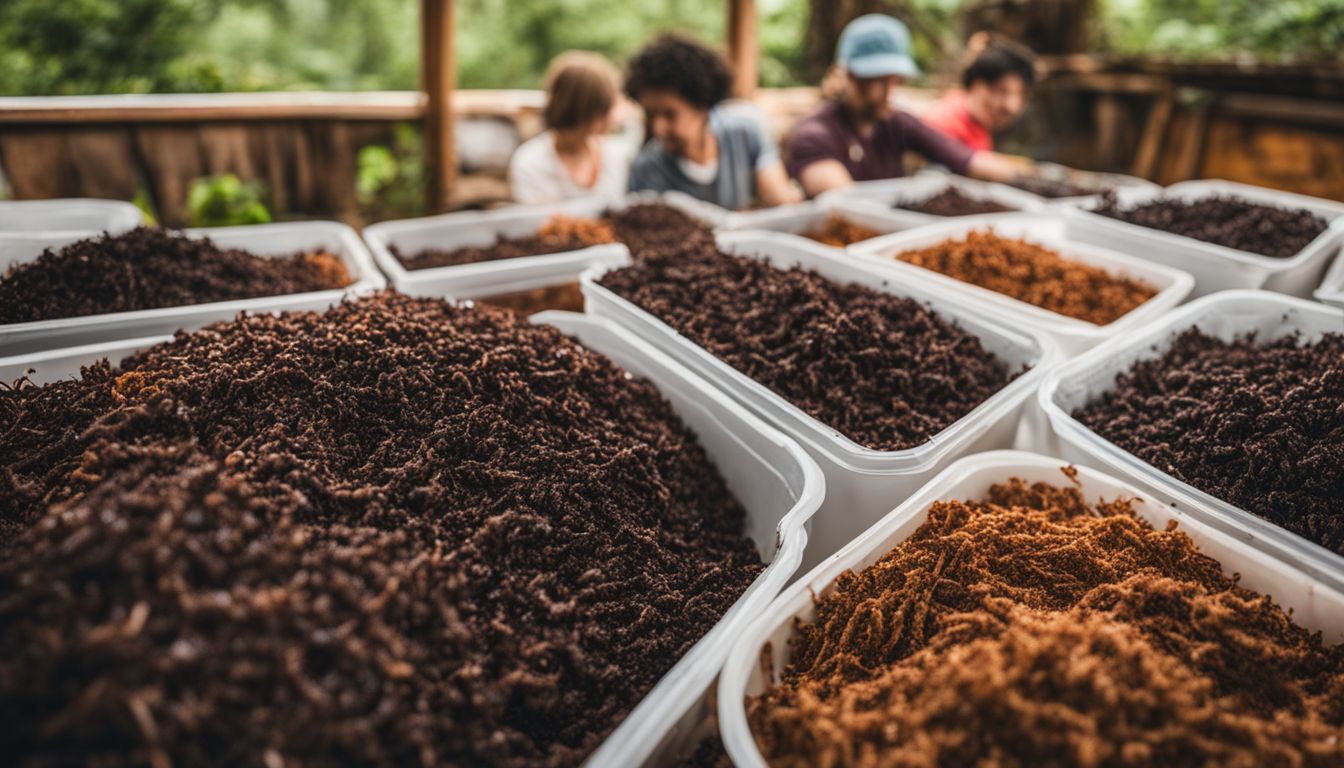 Composting worms reproduce to increase their population, which is beneficial for faster composting. By having more worms in the system, there are more organisms working together to break down organic matter into nutrient-rich worm castings.
Composting worms reproduce to increase their population, which is beneficial for faster composting. By having more worms in the system, there are more organisms working together to break down organic matter into nutrient-rich worm castings.
With a larger worm population, the rate of decomposition and conversion of waste materials into compost is accelerated. This leads to a more efficient and productive composting process.
Continuous supply of nutrient-rich worm castings
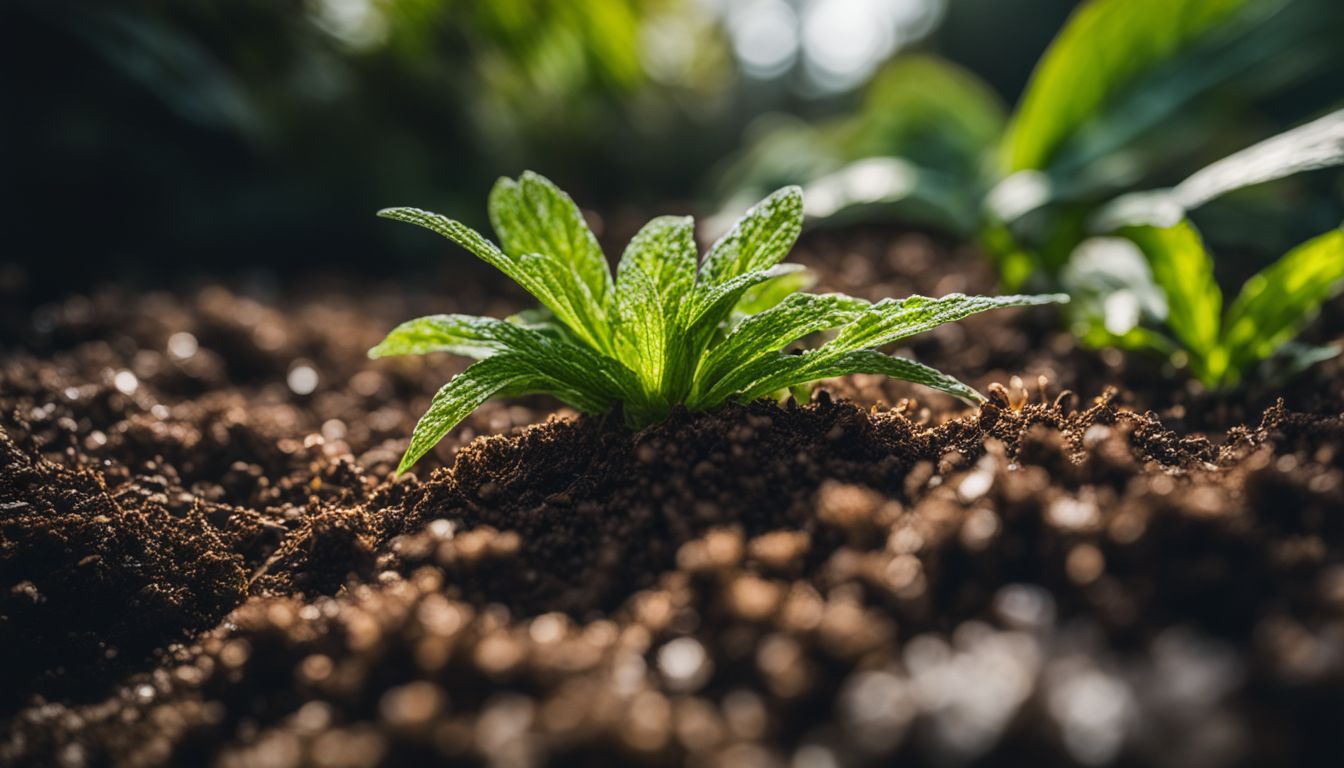
Composting worms provide a continuous supply of nutrient-rich worm castings, also known as vermicompost. These castings are the result of the worms digesting organic waste material, such as food scraps and plant matter.
As the worms pass the waste through their bodies, it is broken down into a rich and fertile soil amendment.
Worm castings are highly beneficial for plants because they contain essential nutrients like nitrogen, phosphorus, and potassium. They also improve soil structure and enhance water retention capacity.
These nutrient-rich worm castings can be used to enrich garden soils or added to potting mixes for healthier plant growth. This sustainable source of natural fertilizer helps reduce reliance on synthetic fertilizers while promoting eco-friendly gardening practices.
By continuously reproducing and producing more composting worms, there is an increased population available to process organic waste into valuable vermicompost. This ensures a consistent supply of nutrient-rich worm castings that can be used to nourish plants in gardens or potted plants at home.
The ongoing production of worm castings helps maintain healthy soil fertility and promotes sustainable gardening practices.
How to Promote Worm Reproduction in a Composting System
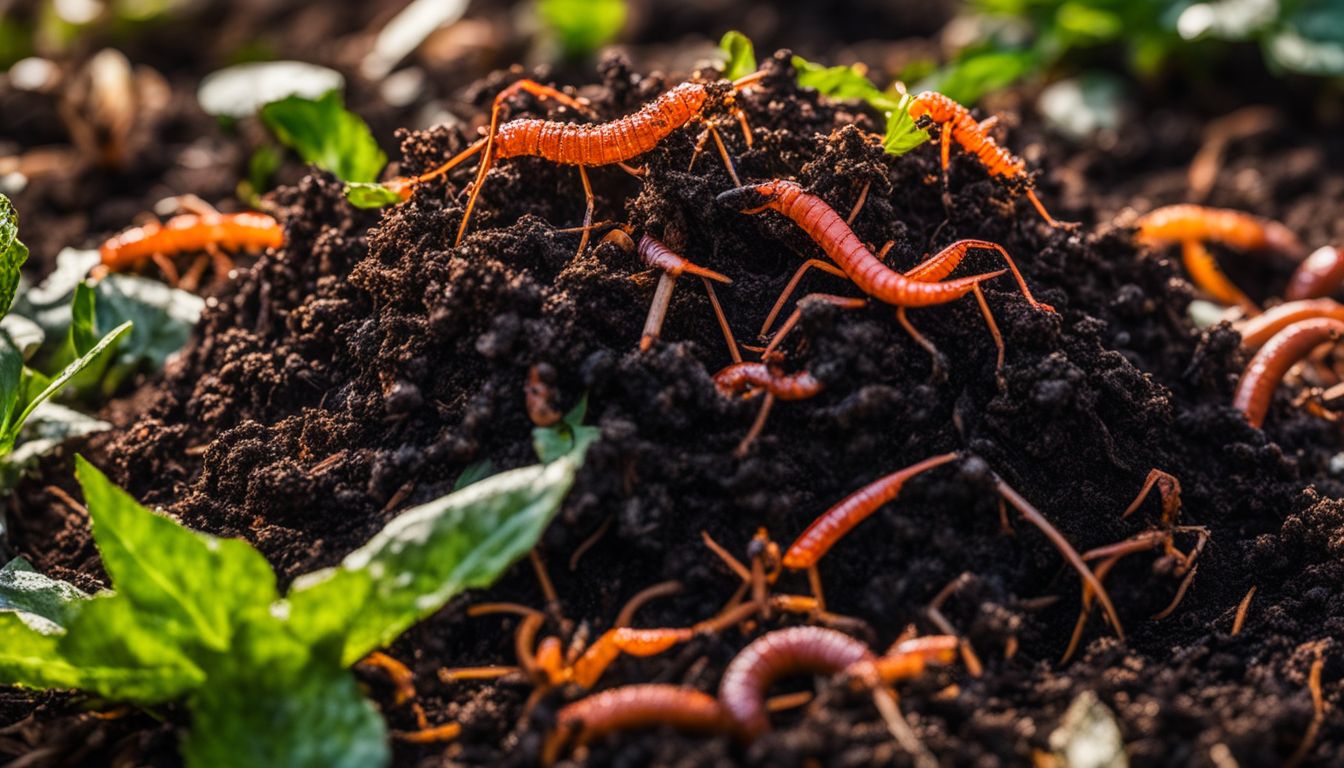
Provide a suitable habitat and maintain optimal environmental conditions to encourage the growth of worm populations.
Provide a suitable habitat (moist bedding, food source)
-93019611.jpg)
Composting worms require a suitable habitat to reproduce successfully. This includes providing moist bedding and a sufficient food source. The bedding should be kept damp but not waterlogged, as worms need moisture for survival and reproduction.
Additionally, the food provided should be high-quality organic matter, such as fruit and vegetable scraps, which are rich in nutrients that support worm growth and egg production. By creating an ideal environment with proper moisture levels and nutritious food, you can promote the successful reproduction of composting worms in your system.
Maintain optimal environmental conditions
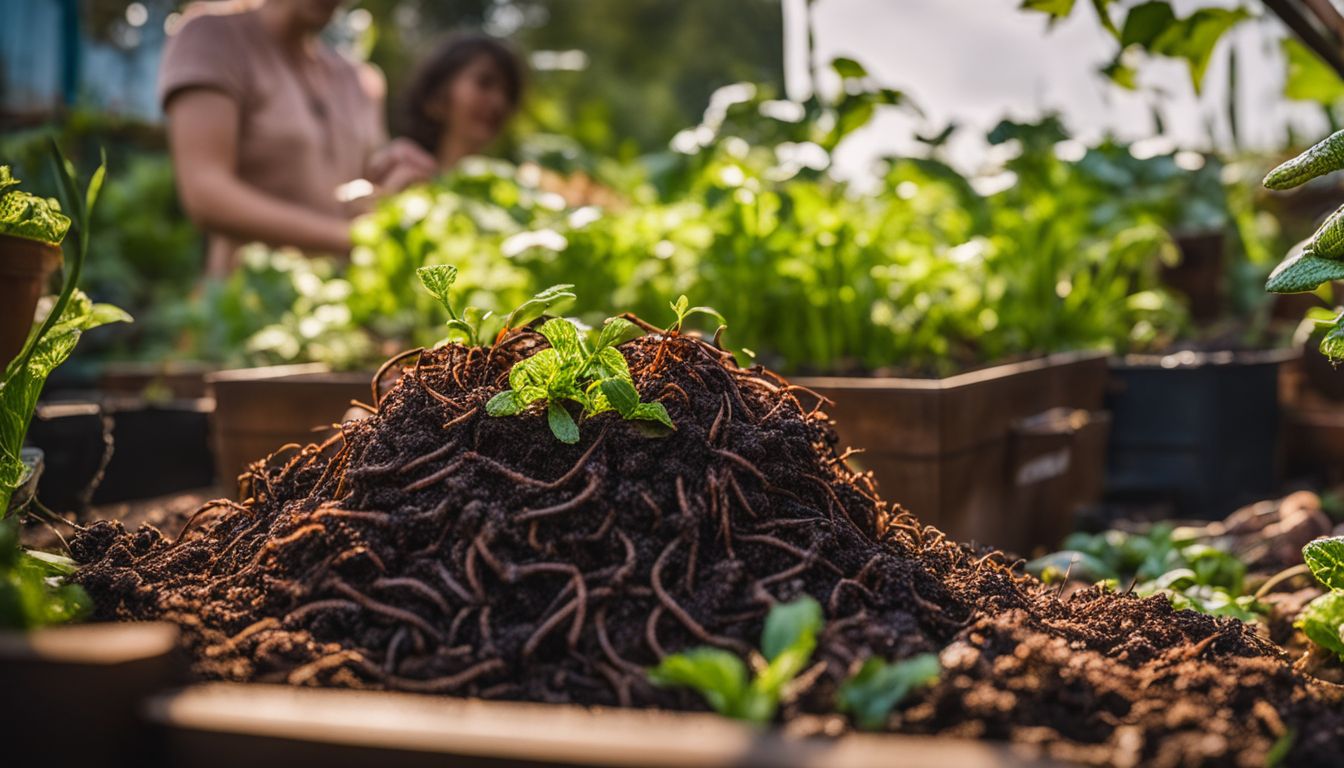
To ensure successful reproduction of composting worms, it is important to maintain optimal environmental conditions. This includes maintaining a suitable temperature, moisture levels, and pH balance.
Composting worms thrive in temperatures between 55-77°F (13-25°C). Keeping the bedding moist but not waterlogged is essential for their survival and reproduction. The moisture level should be around 70-80%.
Additionally, maintaining a slightly acidic pH level of around 6.5-7 is beneficial for worm reproduction. By providing these ideal conditions, you can promote the growth and multiplication of composting worms in your system.
Avoid overfeeding or disturbing the worms
To promote worm reproduction in a composting system, it’s important to avoid overfeeding or disturbing the worms. Overfeeding can lead to excess food decomposing and creating heat, which could harm the worms.
It’s best to provide them with a balanced amount of quality feed, such as fruit and vegetable scraps. Disturbing the worms by constantly moving their bedding or digging through their habitat can also disrupt their reproductive cycle.
So, it’s recommended to handle the worms gently and minimize disturbances to give them a conducive environment for mating and egg laying.
Conclusion

In conclusion, composting worms reproduce through a process of mating and laying eggs. Red worms, like the Tiger Worm, are hermaphrodites with both male and female reproductive organs.
They require a mate to exchange sperm and fertilize their eggs. By creating an optimal environment for reproduction and providing quality food sources, we can promote the growth of worm populations in composting systems for faster composting and nutrient-rich worm castings.
FAQs
1. How do composting worms reproduce?
Composting worms, like the red wiggler, reproduce by mating. Since they are hermaphrodite worms, each one has both male and female reproductive organs.
2. What is the lifecycle of composting worms?
The lifecycle of composting worms starts with egg laying, then moving to cocoon production and ending with an increase in worm population through breeding habits.
3. Do factors influence reproduction in composting worms?
Yes, different factors such as food supply and environment can influence the reproductive cycle of composting worms.
4. How do Red Wiggler Worms breed?
Red Wigglers take part in a breeding frenzy where they grow and raise their young ones. It leads to a rapid worm population increase.
5. Can composting worms reproduce without mating?
No, even though they have both sets of reproductive systems, sexual reproduction takes place for offspring creation among composting worms.

As a dedicated mother and passionate software developer, she weaves her diverse experiences into captivating stories that inspire and engage readers. Emma's love for sustainable living and environmental consciousness permeates both her personal and professional life. When she's not immersed in the world of coding and software development, Emma can be found nurturing her family and tending to her thriving organic garden. Her commitment to sustainable practices extends to every aspect of her life, from repurposing household items to embracing eco-friendly technologies.

